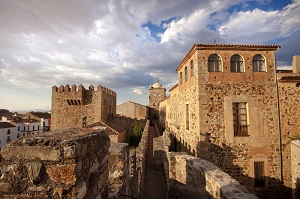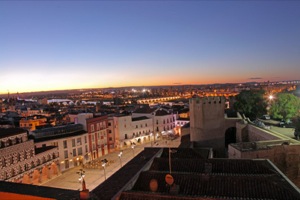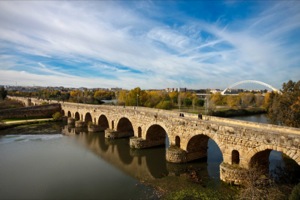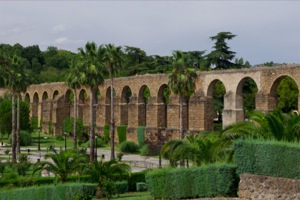Destinations
Extremadura communications network
Whether by land or by air, take note of your options for travelling to Extremadura.
- Plan your Trip
- Communications network
How to arrive and get around
Whether by land or by air, take note of your options for travelling to Extremadura.
The Autonomous Community of Extremadura lies in the south-west of the Iberian Peninsula and is made up of the two largest provinces in Spain: Caceres and Badajoz. If you are planning to spend a few days visiting Extremadura's tourist attractions, you may be interested to learn about its communications network.
If you travel to Extremadura by plane, you will land at Badajoz airport, the only airport in the region. The airport is in the municipality of Talavera la Real, 14 kilometres from the capital. There are regular flights from Badajoz airport to Madrid and Barcelona, and to other cities at certain times of the year. The airport has a shopping area, car rental facilities, free 24-hour parking and a taxi rank.
If you prefer to travel by train, the Spanish Railway Medium Distance network offers railway services in Extremadura, linking this autonomous community with Andalusia, Castilla - La Mancha and Madrid. Spanish Renfe trains run from Merida to Seville; from Badajoz, Caceres and Madrid; another railway line runs through Badajoz, Merida, Ciudad Real, Madrid, and another connects Zafra with Huelva.
By road you have more options. Extremadura has a highly efficient road network almost 9,000 km long. Extremadura is crossed by two major routes: the A-5 motorway and the A-66 motorway. The A-5 (the former NV) crosses the region from east to west and connects Madrid and Lisbon, passing through Navalmoral de la Mata, Trujillo, Miajadas, Mérida and Badajoz. The A-66 runs from north to south. It starts off in Gijon and ends in Seville, passing through the provinces of Caceres and Badajoz. The Extremadura part of the A-66 passes through Plasencia, Caceres, Merida, Almendralejo, Villafranca de los Barros and close to Zafra. A large part of the A-66 was built along the former N-630, some of whose sections remain in use.
There are also other motorways which connect important towns: the A-58, a national highway connecting Trujillo and Caceres; the EX-A1 autonomous highway between Navalmoral de la Mata and Coria, which will be extended into Portugal, and the EX-A2 autonomous highway, between Don Benito and Villanueva de la Serena with Miajadas. There are also other national and autonomous roads which distribute traffic through the region and towards other autonomous communities and Portugal: the N-110, between Plasencia and Ávila; the N-502 which descends from Talavera de la Reina (Toledo) to Córdoba, passing through the far east of Badajoz province; the N-430, which connects Badajoz capital with Albacete; the N-432, which reaches Badajoz capital from Granada and the N-521, which you can use to travel from the city of Caceres to the border with Portugal.
There are bus stations in all the main towns in Extremadura's provinces, offering perfect communications between counties, provincial capitals and the most important cities of neighbouring autonomous communities. There are also metropolitan bus services in Extremadura's most important cities.
If you like getting around the city streets by bike, some of the cities have a bicycle loan service. Ask for information at the local tourist offices.
More suggestions
-

Cáceres — buzzing with life and history
The stone of its streets and façades reflect the march of history from Palaeolithic times. Presently, it is a hive of cultural activity.
-

Badajoz — leisure and culture at the border
Crossed by the Guadiana River, there's nothing you won't find in Badajoz. The city's building façades and street corners are just oozing with history; not to mention its parks, ideal for a stroll or sports activities, and a wide range of services on offer to enable you to enjoy the city at your leisure.
-

Mérida, roman to modern-day city
In addition to being some of the most important Roman remains in Europe, Mérida has many leisure activities and services.
-

Plasencia — where culture and nature go hand in hand
The historical heritage of Plasencia holds its own in terms of the cultural interest of the other towns and cities of Extremadura, but with the added attraction of its parks.
